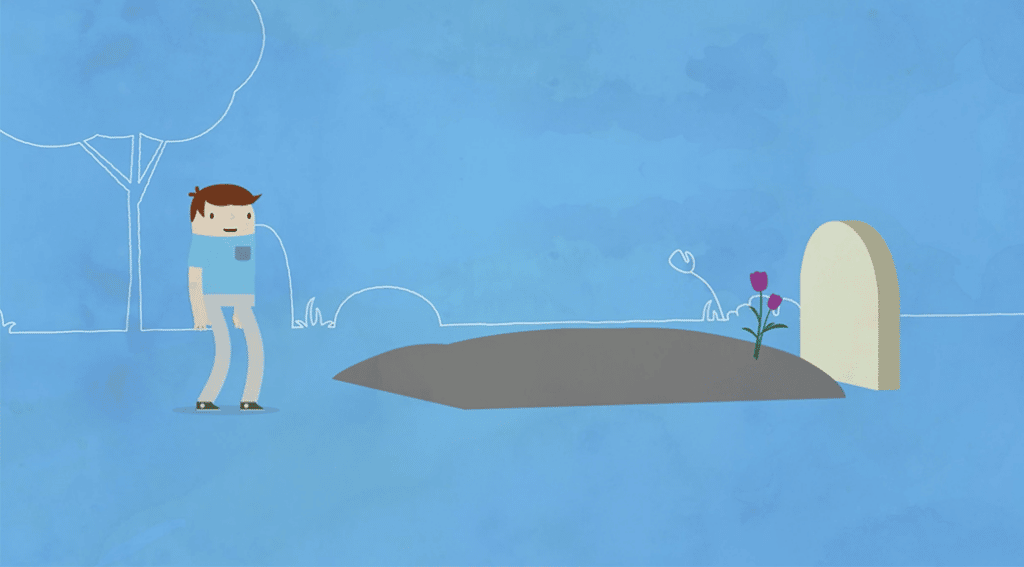What happens when you die? Will your soul travel to an ethereal plane? Does your spirit remain on Earth? Or, more simply, does your body decompose from whence it came?

Welcome to The Existential Interest, a new blog where I wax philosophical on the deepest human questions.
Nah. Just kidding.
Who knows what happens after you die? Not me! Unless, of course, the topic is estate planning and what happens to your finances after you die.
I’m starting to spend more time on The Best Interest writing about deeper financial planning issues. Estate planning is a big one. So let’s start with the basics of estate planning.
The Basics of Estate Planning
If the context hasn’t clued you in, estate planning answers the question, “What happens to your assets when you die, or if you get incapacitated?” [Your first big takeaway today: most people don’t think about the incapacitation part!]
- Who is given your assets?
- When are they given?
- How are they taxed?
- Who is involved? Attorney, accountants, etc?
Estate planning is almost always done with an attorney. CFP financial planners are frequently involved, too. The main goals are to ensure:
- Your money goes where you want, to the people and the causes that mean most to you.
- Your beneficiaries and heirs aren’t saddled with an unexpected estate tax or gift tax.
- Your assets are invested in an appropriate fashion, based on your wishes and associated timelines.
The Documents
Estate planning involves many legal documents, but thankfully there are a “basic” set of three.
A will (plus guardianship). A will states how you wish to distribute your assets. And guardianship – which is often included in a will – is about your children and other dependents. What will happen to them and who will care for them after your death or in the event you’re no longer able to care for them?
A power of attorney, or POA (sometimes called financial POA or durable POA), gives legal rights to another person to handle your non-health, non-medical affairs in case of your incapacitation.
And an advanced healthcare directive (AHCD) states your medical preferences if you become incapacitated, while designating someone else to make medical decisions for you if you’re unable. AHCD is used interchangeably with medical POA and healthcare proxy, though there are nuanced differences between the three documents.
What Are Trusts?
Trusts, in simple terms, are a three-party fiduciary agreement. Party #1, the Trustor/Grantor, has assets. They give Party #2, the Trustee, rights to hold the assets on behalf and for the benefit of Party #3, the Beneficiary.
These “Parties” can be various people or organizations. Frequently, Party #1 and Party #3 are individual people. And Party #2 can often be an independent advisor, like an attorney or a bank’s trust department.
Why set up a trust? It might be to ensure your wishes are followed post-death. Or to reduce tax burden. Or to leave a small, annual charitable gift for many years to come. Or to provide assets to young descendants in the future. There are many reasons.
Do you need a trust? That’s not a simple question. A trusted advisor – e.g. a trust/estate attorney or CFP financial planner – is a great person to ask.
The 11 Steps of Estate Plan Creation
Estate planning 101 isn’t too bad. Here are the 11 steps I recommend people follow:
- Inventory all your assets and debts. What do you own, and what do you owe?
- While you’re living, ensure your family is protected against your death. In other words, buy appropriate life insurance (term policies, not whole)
- Determine the estate planning documents you need. You might want to consult a professional for this.
- Identify a guardian for your children, pets, etc (unless you’re a very serious prankster, you’ll want to check with the potential guardian first)
- Establish your estate planning documents. The three discussed before – a will, a power of attorney, and an advance healthcare directive – are generally considered “must haves” for everyone.
- Name your beneficiaries. Some accounts – like IRAs and 401ks – do not care about what your will says. You need to name the account’s beneficiary with the account itself. Have you checked your beneficiaries lately? There are “horror stories” of people leaving million-dollar IRA accounts to an ex-spouse from 30 years ago, simply because the deceased never updated their account beneficiaries while alive.
- Who else is involved? Do you have an attorney, accountant, financial planner, etc. that you’re working with? You’ll likely want them named in some capacity in your estate plan.
- Finalize, sign, and notarize your estate plan.
- Notify your guardians and executors. Let them know what your will says, and how they might end up involved in the future.
- Keep the documents safe! Store a copy of your estate plan in a safe place.
- Review and update your estate plan. Two good rules of thumb are 1) review and update at every major life event, and/or 2) once every 5 years.
You’ll notice this list is age agnostic.
Whether you’re 35 or 75, the 11 steps in this list are a terrific way to get your estate plan in order.
Sure, there are complexities to estate planning. You probably don’t want to tackle this task yourself. But conceptually, estate planning isn’t a scary topic. There are far more frightening existential thoughts to consider.
…which we’ll dig into next week here on The Existential Interest.
Thank you for reading! If you enjoyed this article, join 8000+ subscribers who read my 2-minute weekly email, where I send you links to the smartest financial content I find online every week.
-Jesse
Want to learn more about The Best Interest’s back story? Read here.
Looking for a great personal finance book, podcast, or other recommendation? Check out my favorites.
Was this post worth sharing? Click the buttons below to share!